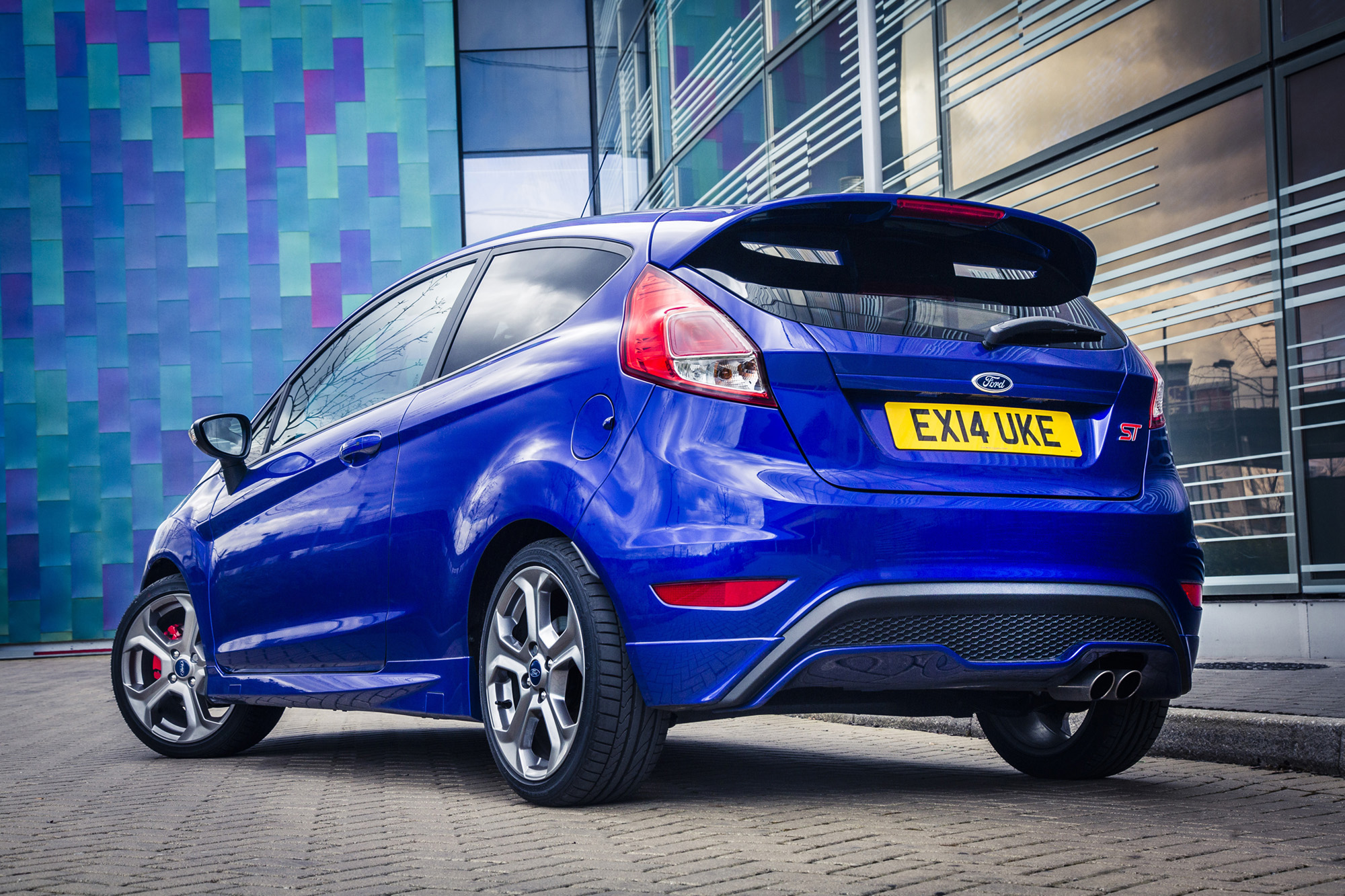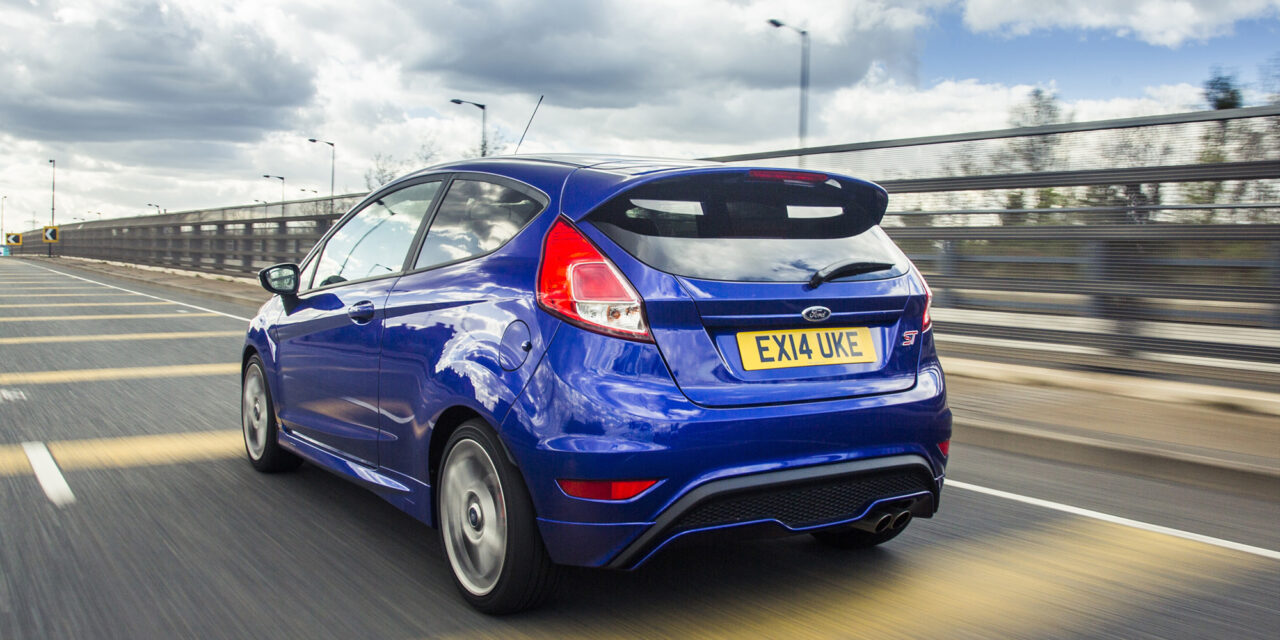Ford Fiesta ST
There are some cars that just get it. Cars that, from the moment you turn the key, tell you they’re built for smiles per gallon, not just miles. For me, and countless others, that car is the Ford Fiesta ST. It’s more than just a hot hatch; it’s a testament to the idea that exhilarating performance doesn’t have to break the bank. In this blog post, I’m excited to share my full review of the Fiesta ST, exploring what makes it such a legendary driver’s car and whether its reputation truly holds up to the hype.
Performance
The Fiesta ST isn’t about raw, face-melting speed in a straight line, but rather how it delivers its acceleration. Powered by a turbocharged 1.5-litre EcoBoost engine, it punches out a respectable 197 bhp and 214 lb-ft of torque (in the latest generation, or 180 bhp/197 bhp overboost in the previous model). This allows the little hot hatch to rocket from 0-60 mph in a swift 6.5 seconds, making it more than capable of holding its own in urban sprints and offering exhilarating overtakes on the open road. What truly impresses, however, is the engine’s eager willingness to rev, combined with a satisfyingly tractable power delivery that makes it feel much faster and more responsive than the numbers alone might suggest.
Where the Fiesta ST truly shines, and what cemented its legendary status, is its exceptional handling. Ford has engineered a chassis that feels alive, communicative, and utterly playful. The steering is electrically assisted but beautifully weighted, providing pinpoint accuracy and genuine feedback that allows you to feel exactly what the front wheels are doing. Coupled with a sophisticated suspension setup – including unique force-vectoring springs in the latest generation which improve turn-in and stability – the ST dives into corners with an eagerness that belies its front-wheel-drive layout. It’s a car that thrives on being pushed, offering remarkable grip and a beautifully balanced, adjustable nature that encourages spirited driving without ever feeling twitchy or unpredictable.
Beyond the subjective feel, the Fiesta ST’s performance is underpinned by clever engineering. The standard six-speed manual gearbox is a joy to use, with short, precise throws that enhance the driver engagement. The optional Quaife limited-slip differential (LSD) on higher trim levels is a game-changer, dramatically improving traction out of corners and allowing you to put the power down far more effectively. The braking system, featuring ventilated discs up front, provides strong and consistent stopping power, inspiring confidence even during hard driving. All these elements combine to create a performance package that isn’t just about impressive figures, but about delivering a thoroughly engaging and accessible driving experience that consistently puts a smile on your face.
Maintenance
Keeping your Fiesta ST in peak condition is crucial for preserving its thrilling performance and ensuring reliability. Ford generally recommends a service interval of 12,500 miles or 12 months, whichever comes first, for routine maintenance such as oil and filter changes. However, given the ST’s performance-oriented nature and the likelihood that owners will drive it enthusiastically, more frequent checks and fluid changes – especially for brake fluid and potentially spark plugs – are highly advisable. Key areas to monitor include the condition of tyres and brakes, which will experience increased wear under spirited driving, as well as keeping an eye on fluid levels (oil, coolant, brake fluid) and checking for any unusual noises or warning lights. While generally robust, some owners have reported issues like blend door actuator failures or early warning signs of timing belt issues in older 1.0L EcoBoost engines (though the ST uses a different engine, it’s a good reminder to be vigilant about engine health). Sticking to a diligent maintenance schedule, potentially with a specialist who understands the nuances of performance Fords, will help ensure your Fiesta ST continues to deliver smiles for many miles to come.

Fiesta ST Reliability
The Fiesta ST, particularly the later 1.5-litre EcoBoost models and the preceding 1.6-litre, has generally cultivated a strong reputation for reliability within the hot hatch segment. While no performance engine is entirely flawless, the ST’s powerplant is considered robust when properly maintained. Unlike some other engines in Ford’s broader EcoBoost family, the ST’s variants typically utilize a more conventional timing belt system (or chain in some iterations), avoiding the contentious “wet belt” design seen elsewhere. Common issues, if they arise, tend to be less catastrophic, such as occasional reports of coolant intrusion in earlier 1.5L models, or minor oil consumption, which are often manageable with diligent servicing and attention to fluid levels. Overall, the ST offers a compelling package of exhilarating performance without being overly fragile.
This stands in stark contrast to the infamous 1.0-litre EcoBoost engine, widely dubbed the “Ecoboom” by some owners due to its well-documented and often severe reliability issues. The 1.0L engine suffered from significant design flaws, most notably a “wet belt” timing system that could degrade and block oil pickup, leading to catastrophic engine failure due to oil starvation. Furthermore, early versions were plagued by brittle nylon coolant pipes that could crack, causing rapid coolant loss, overheating, and subsequent head gasket failures or even engine fires. While Ford did issue recalls and revise designs over time, the pervasive nature and severity of these problems cast a long shadow over the 1.0-litre unit. Therefore, a prospective Fiesta ST owner can generally approach their purchase with much greater confidence in the engine’s long-term durability compared to Fiestas fitted with the 1.0-litre EcoBoost.
Track/Racing
The Ford Fiesta ST is a revelation on track, consistently punching above its weight and price tag to deliver an incredibly engaging and rewarding experience. Its compact dimensions, combined with a brilliantly tuned chassis, mean it thrives on tight, technical circuits. The car’s exceptional agility and communicative steering allow drivers to precisely place it on corner entry, while the rear axle’s playful adjustability, particularly with a well-timed lift-off, can help rotate the car and minimize understeer. For those looking to truly exploit its potential, the optional Quaife limited-slip differential (LSD) in the front is a game-changer, dramatically enhancing traction out of corners and allowing for earlier, more aggressive throttle application, shaving precious tenths off lap times and providing immense satisfaction.
While its straight-line speed might not challenge larger, more powerful sports cars, the Fiesta ST’s ability to carry immense speed through corners makes it incredibly effective on a race track. Its lightweight nature (typically around 1,200-1,300 kg) means less mass to manage under braking and acceleration, contributing to its overall nimbleness. Drivers often praise its robust braking system and the six-speed manual gearbox, which facilitates quick, precise shifts crucial for maintaining momentum. Many owners choose to further enhance their ST’s track performance with upgrades such as high-temperature brake fluid and pads, improved intercoolers to combat heat soak, and stickier track-focused tires, transforming an already capable hot hatch into a formidable track weapon.

History
The lineage of fast Fords, particularly within the compact Fiesta platform, stretches back decades before the “ST” badge became synonymous with performance. Enthusiasts fondly recall models like the XR2 and RS Turbo variants of the 1980s and 90s, which laid the groundwork for a hot hatch reputation. These early iterations, while often raw and exciting, hinted at the potential for a truly drivers-focused Fiesta. It wasn’t until the mid-2000s that Ford officially consolidated its performance offerings under the “ST” (Sports Technologies) designation, leading to the introduction of the first true Fiesta ST model, setting the stage for what would become a celebrated nameplate.
The Mk6 Fiesta ST, launched in 2004, was powered by a naturally aspirated 2.0-litre Duratec engine, producing a modest 148 bhp. It was a decent entry into the hot hatch world, offering a firm ride and a lively chassis that hinted at the cornering prowess to come. While respectable, it often felt overshadowed by more potent and charismatic rivals, particularly from French manufacturers. It served as a stepping stone, proving that Ford could indeed build a performance Fiesta that was more than just a body kit, but it still lacked that certain spark that would define its successors, remaining a competent but not class-leading option.
The true breakthrough arrived with the Mk7 Fiesta ST in 2013. This generation completely redefined expectations for a small hot hatch. Ford equipped it with a turbocharged 1.6-litre EcoBoost engine, initially delivering 180 bhp (with an overboost function pushing it to 197 bhp for short bursts). Critically, its chassis tuning was nothing short of brilliant: sharp, communicative steering, a wonderfully balanced and adjustable handling setup, and a firm but engaging ride transformed the car into a dynamic masterclass. The Mk7 ST quickly garnered widespread critical acclaim, becoming the benchmark for affordable driving fun and a genuine driver’s car. Its success was further cemented by the limited-run ST200 model, which offered a factory power bump and minor tweaks, keeping the excitement alive right until the end of its production.
The most recent iteration, the Mk8 Fiesta ST, launched in 2018, faced a challenge from purists due to its shift to a 1.5-litre, three-cylinder EcoBoost engine. Despite initial scepticism about losing a cylinder, the new engine still delivered a healthy 197 bhp and a surge of torque, proving capable and characterful with its unique thrum. Crucially, the Mk8 maintained and even enhanced the handling prowess of its predecessor, thanks to innovative features like force-vectoring springs and the availability of a Quaife mechanical limited-slip differential. It continued the legacy of being an incredibly engaging and capable car on both road and track. While its production eventually ceased as Ford streamlined its line-up, the Fiesta ST, across its generations, firmly established itself as a true icon of accessible, unadulterated driving pleasure.
Our Thoughts On The Fiesta ST
From our perspective, the Ford Fiesta ST is a truly special car, one that consistently puts a grin on our faces every time we get behind the wheel. We absolutely adore its handling; it’s simply sublime, offering a level of engagement and precision that few cars, let alone those at this price point, can match. The way it dives into corners, the feel through the steering wheel, and its playful adjustability are all hallmarks of a truly driver-focused machine. However, our enthusiasm is tempered by the reality that, while generally robust, the Fiesta ST can sometimes be more susceptible to reliability issues compared to some of its rivals if not meticulously cared for. This isn’t to say it’s fragile, but rather that its performance-oriented nature demands diligent and correct maintenance. Neglect can lead to problems, but look after it properly, and the rewards in terms of pure driving enjoyment are immense.

